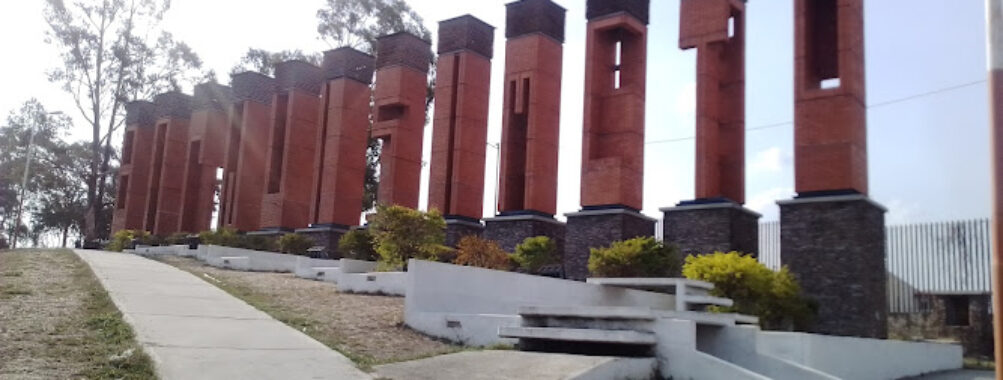
Letras Corpóreas BARQUISIMETO
“`html
Table of Contents
Description
Letras Corpóreas Barquisimeto is one of those spots that surprises you, not because it’s a massive monument or a historical landmark, but because it captures the essence of a city in a few bold, colorful letters. You know those giant city name signs you see travelers posing with all over Instagram? Yeah, that’s exactly what this is—but with a Barquisimeto twist. It’s bright, modern, and full of local pride. The letters stand tall against the skyline, and depending on the time of day, the light hits them just right for that perfect photo. I still remember the first time I went—it was early morning, the air was crisp, and the city was just waking up. There was something peaceful about it, like the letters themselves were quietly saying, “Welcome to Barquisimeto.”
What’s nice about this spot is how it manages to feel both touristy and personal. Locals come here with their families, couples stop by for a quick selfie, and kids run around while parents chat nearby. It’s simple, but it’s also a place where you feel connected to the rhythm of the city. I’ve always thought that’s what makes travel so meaningful—not just the big attractions, but the small, everyday places that people love.
Key Features
- Large, colorful 3D letters spelling out “Barquisimeto,” perfect for photos and social media posts.
- Open public space that’s safe and welcoming for families and children.
- Surrounded by local greenery and nearby cafés where you can grab a snack or cold drink.
- Easy to access from central parts of the city, making it a quick stop on any sightseeing route.
- Great lighting throughout the day, especially during sunrise and sunset for photography lovers.
- Occasional local events or gatherings that bring a festive atmosphere to the area.
And here’s something I love—it’s not just a photo spot; it’s a symbol of pride for the people of Barquisimeto. You can feel it when you’re there. Everyone’s smiling, laughing, maybe even chatting about the city’s famous sunsets or music scene. It’s a small but meaningful reminder that every city has its heartbeat, and this is one of the places where you can feel Barquisimeto’s pulse.
Best Time to Visit
If you’re planning to visit, timing matters more than you might think. The best time to stop by is early in the morning or late in the afternoon. The light is softer, the heat is manageable, and you’ll get those golden hues that make your photos pop without needing filters. I made the mistake once of going at noon—it was blazing hot, and I swear even the pavement looked like it was melting. So trust me, go early or go late.
As for the season, Barquisimeto has a fairly warm climate year-round, but the dry months (roughly from December to April) are more comfortable for outdoor exploring. During that time, you’ll also find more local festivals happening, which adds a bit of extra charm to your visit. If you’re lucky, you might even catch a small performance or local vendor setting up nearby.
How to Get There
Reaching the Letras Corpóreas Barquisimeto is pretty straightforward. If you’re staying anywhere near the city center, it’s just a short drive or taxi ride away. Many locals will know exactly what you mean if you ask for “las letras de Barquisimeto,” so don’t worry about getting lost. Public transport is available, but honestly, I’d recommend taking a cab or ride-share—it’s faster, and you can ask the driver to wait while you take your photos.
If you’re the kind of traveler who likes to walk and take in the city, you can easily make it part of a larger walking route that includes nearby plazas and street art. Barquisimeto is known for its artistic vibe, and you’ll see murals and sculptures scattered along the way. It’s a pleasant walk, especially in the morning when the streets are calm and the air feels fresh.
Tips for Visiting
Here’s where I get a bit practical—because little details can make your visit smoother (and way more fun). First off, bring water. It’s Venezuela, so the sun doesn’t play around. A hat or cap helps too, especially if you’re visiting midday. And don’t forget your camera or phone with a full battery—you’ll definitely want to snap a few shots.
- Visit during early morning or late afternoon for the best light and fewer crowds.
- Bring sunscreen and water—shade can be limited depending on the time of day.
- If you’re traveling with kids, this is a great stop. There’s space for them to move around safely.
- Try to pair your visit with a local café stop nearby—there’s nothing better than a cold drink after exploring.
- Keep an eye out for local artisans or vendors who sometimes set up near the site. It’s a nice way to support the community and take home a small souvenir.
- For photographers: use a wide-angle lens if you want to capture the full set of letters without distortion.
One more thing—this place feels different depending on the time of day. During the morning, it’s peaceful, almost meditative. In the afternoon, it’s lively, full of chatter and laughter. And at dusk, the sky behind the letters turns this soft orange-pink that’s almost surreal. I remember standing there one evening, watching the letters glow faintly in the fading light, and thinking, “This is why I travel—to find beauty in the simplest places.”
So if you’re passing through Barquisimeto, make a quick stop at the Letras Corpóreas. It’s not a long visit, but it’s one that sticks with you. You’ll leave with great photos, sure—but also a small piece of the city’s soul in your memory. And honestly, that’s worth more than any souvenir.
“`
Location
Places to Stay Near Letras Corpóreas BARQUISIMETO
Find and Book a Tour
Explore More Travel Guides
No reviews found! Be the first to review!